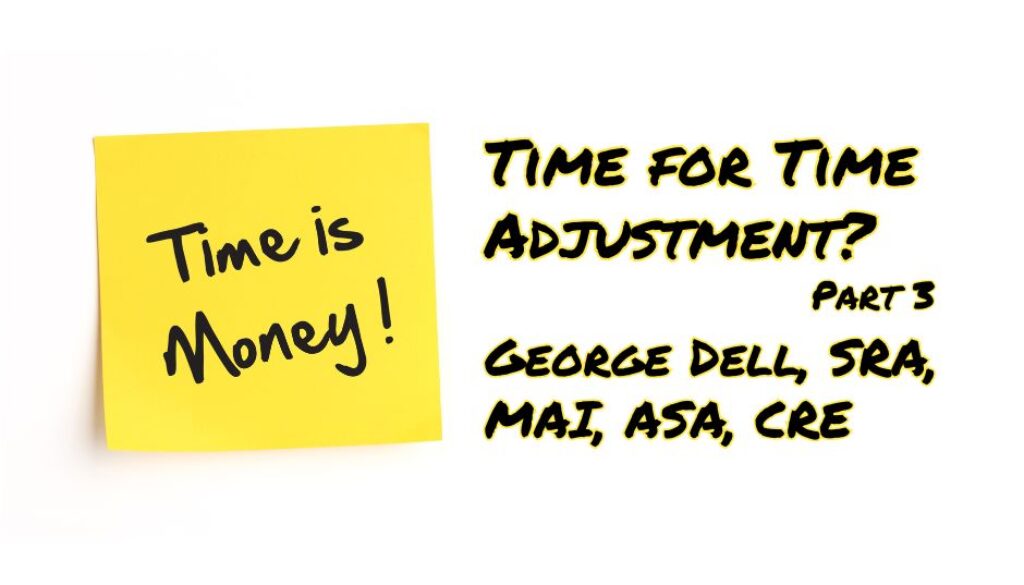A time adjustment is needed because all our sales data is historical. A sale price 6 months ago cannot be properly reflected in today’s dollars. Two parts. Two components. Two reasons:
- The value of the dollar has changed.
- The competing market price level has changed.
Editor’s Note: This blog is part 3 on the GSE Guidelines series. Read the series here.
As an example, if the past year shows — via the government consumer price index (CPI) — that we have had inflation of around 2.4% for the year, a dollar-value price-level adjustment is needed. Say if a comparable sale at $400,000 took place 8 months ago, then the change in the value of a dollar is 8/12 of the annual amount, or 1.8% since the sale date. That is an adjustment needed of $7,200.
The $7200 is solely the change in the value of a dollar. The Part 1. If you stop here, with no time adjustment, your subject value indicator will be too low by over $7000! If you stop there.
The 2.4%/year is the same as 0.2% per month, or …
So what about Part 2 (the market-segment demand part)? Let’s say the market segment (the actual competing/similar sales) went down or up at the same rate as above (0.2% per month).
The 0.2%/month equals 0.05%/day, or $20 per day.
If the competing-segment of this market went up the same amount as the dollar-value ($20/day), the total “time” adjustment upward is $14,000 for that sale 8 months prior.
BUT if the competing-segment of this market went down the same amount ($20/day), the total “time” adjustment is $0 (zero) for that sale 8 months prior.
Hmmmm. Is there such a thing as a “level” market? Really?
Much easier to just call this what it is: a market price index (MPI)©.
Let’s consider a typical SFR in a particular neighborhood. What is the best index adjustment?
We have identified one way for time adjustments. Are there others? Lets look at each very briefly. Many are available. Which is best for real estate appraisal? We have: CPI, producer price index, wholesale price index, employment cost index, import or export price index, and GDP deflator index.
And there are specialized (real estate) indexes: HPI (residential nationwide), “All transactions” HPI (Fed Reserve Bank), state or local indexes including/excluding vacant or commercial, and by zip code.
Or, should we consider an index for a whole neighborhood? Should it include gas stations and hotels? No. For our “average” home — should it include the highest priced segment, lowest price segment, unexplained outliers? No. Should our SFR index include condos? Waterfront SFRs? No.
The best index is obvious. Obvious. It should include the trend only for the competing properties a “typical buyer” would consider. Similar in living area, site size, quality/condition, and other features.
This is not difficult to understand. The easiest way may be the best! Only one index is the right index!
The CAA (Community of Asset Analysts), and Valuemetrics.info classes and videos provide free and inexpensive CE courses, (such as the Stats, Graphs, and Data Science) curriculum which provide the theory, the practice, and even the free, open-source software. (It’s fun, satisfying, and modern.)
Join us.
